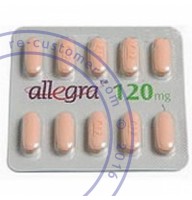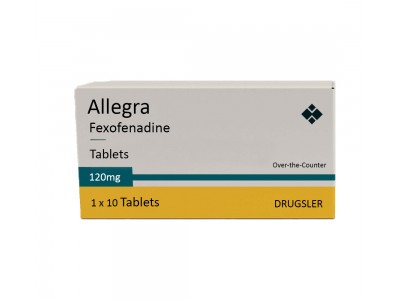What is Allegra (Fexofenadine)?
Allegra, also known by its generic name fexofenadine, is a popular antihistamine medication primarily used to treat allergy symptoms. It works by blocking the effects of histamine, a substance in the body that is responsible for allergic reactions. Allegra is commonly prescribed for the treatment of hay fever, seasonal allergies, and other conditions involving allergic reactions.
How Allegra Works
Allegra fexofenadine is an antihistamine that helps alleviate symptoms such as runny nose, sneezing, itchy eyes, and throat irritation caused by seasonal allergies. It is also effective in treating skin hives, and it can relieve itching associated with chronic urticaria, which is another form of allergic reaction. It works by inhibiting the action of histamine, which can reduce the severity of these symptoms.
What is Allegra Used For?
What is Allegra used for? Allegra is mainly prescribed to treat allergic rhinitis, which is a condition that results in inflammation of the nasal passages due to allergens like pollen or pet dander. It can also be used for chronic urticaria, a condition that causes red, itchy hives to appear on the skin. People with hay fever, a common allergy to pollen, benefit greatly from this medication.
Allegra Dosage and How to Take It
The dosage of Allegra 180 mg is typically recommended for adults and children over 12 years of age. For those who have mild to moderate symptoms, a 60 mg dose may be sufficient. It is important to follow the prescribed dosage carefully to avoid any adverse effects. Allegra should be taken with water and can be taken with or without food. For children aged 2 to 11, a lower dose of fexofenadine is usually prescribed.
Fexofenadine Side Effects
Fexofenadine vs Other Antihistamines
When comparing fexofenadine vs antihistamines like loratadine or cetirizine, Allegra is known for being non-drowsy, which is a significant advantage for people who need to avoid sedation. Unlike some older antihistamines, Allegra doesn’t typically cause drowsiness, which makes it a preferred option for people who want to stay alert while treating their allergy symptoms.
Drug Interactions with Allegra
While fexofenadine drug interactions are rare, certain medications may alter how Allegra works. For example, antacids containing aluminum or magnesium can interfere with the absorption of Allegra, reducing its effectiveness. Additionally, some other drugs, like erythromycin and ketoconazole, may increase fexofenadine levels in the bloodstream. Always consult a healthcare provider before taking new medications alongside Allegra.
Is Allegra Safe for Children?
Many parents ask, Is Allegra safe for children? Allegra is generally considered safe for children aged 2 years and older, but the dosage must be adjusted depending on the child's age and weight. Always consult a pediatrician to determine the right dosage for your child.
Allegra for Hay Fever
One of the most common uses for Allegra is in the treatment of Allegra for hay fever, or allergic rhinitis caused by pollen. During allergy seasons, Allegra can provide relief from the typical symptoms of sneezing, runny nose, itchy eyes, and congestion. It’s a valuable tool in managing the discomfort caused by seasonal allergies.
Conclusion
Overall, Allegra (fexofenadine) is a highly effective and widely used antihistamine that helps manage allergy symptoms with minimal side effects. Whether you're dealing with hay fever, skin hives, or other allergic reactions, Allegra provides relief without causing drowsiness. As with any medication, it's important to follow the prescribed dosage and consult with a healthcare provider if you have any concerns about side effects or drug interactions.

